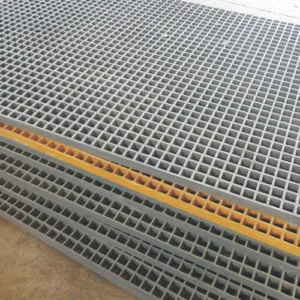Introduction
The quest for the most suitable grating material for various applications involves weighing multiple factors such as durability, cost, and environmental resistance. Fiberglass Reinforced Plastic (FRP) molded grating has emerged as a strong contender against traditional materials like steel, aluminum, and wood. This article delves into the essentials of FRP molded grating, compares it with other materials, and helps you decide which grating is the right fit for your needs.

fiberglass reinforced plastic molded grating
Understanding Fiberglass Reinforced Plastic (FRP) Molded Grating
Composition and Manufacturing Process
FRP molded grating is a composite material made from fiberglass strands, resin, and a curing process that forms a rigid, durable panel. Its unique manufacturing process allows for the creation of a product that is both lightweight and exceptionally strong.
Key Advantages of FRP Molded Grating
The primary benefits of FRP molded grating include its resistance to corrosion, slip resistance, non-conductivity, and ease of installation. These features make it an ideal choice for harsh environments where traditional materials may fail.
Comparing FRP Molded Grating to Other Materials
Against Steel Grating
While steel grating is known for its strength, it is susceptible to corrosion, requires significant maintenance, and is heavier than FRP grating, making installation and transportation more challenging.
Against Aluminum Grating
Aluminum grating offers corrosion resistance and lightweight properties, but it can be costly and less durable under heavy loads compared to FRP grating.
Against Wooden Grating
Wooden grating may provide aesthetic appeal for certain applications but lacks the durability, strength, and resistance to environmental factors that FRP offers.
Applications of FRP Molded Grating
Industrial Sectors
FRP molded grating is widely used in chemical plants, oil and gas facilities, and water treatment plants due to its resistance to corrosive substances.
Public Infrastructure
Its non-conductive and slip-resistant properties make FRP molded grating a safe choice for walkways, bridges, and public utilities.
Factors to Consider When Choosing a Grating Material
Durability
The longevity of the grating material under the specific conditions of the application is crucial.
Maintenance
Consider the maintenance requirements and the ease of cleaning of the grating material.
Cost-Effectiveness
Assess the upfront costs against the lifespan and maintenance costs to determine the most cost-effective solution.
Conclusion
Choosing the right grating material depends on a balance of factors including durability, maintenance, cost, and the specific needs of the application. FRP molded grating, with its unique advantages, offers a compelling alternative to traditional materials for many applications. By considering the specific requirements of your project, you can make an informed decision on whether FRP molded grating is the right choice for you.
 info@unicomposite.com
info@unicomposite.com


























